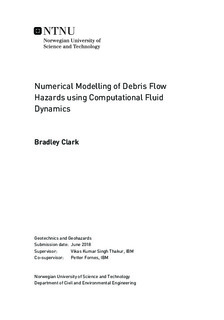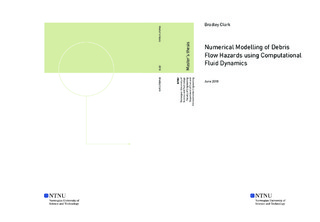| dc.description.abstract | Debris flows are a natural hazard phenomenon that occur periodically in steep mountainous terrain and are typically triggered by heavy precipitation events. The flows are a highly mobile poorly graded mass of soil, rock, water, and debris and are a major risk to infrastructure and human life. The ability to model the behaviour and to predict event inundation and severity are critical to understanding the impact of debris flows. Currently, empirical relationships and depth-averaged numerical models help govern mitigation design, but continued computational developments are making it less and less time consuming to model these events in three dimensions and in full physical detail.
The use of computational fluid dynamics (CFD) can help capture detailed flow dynamics and full 3-dimensional debris flow inundation behaviour. The open-source CFD code REEF3D was used to back analyze laboratory flume tests to validate the use of CFD and non-Newtonian fluid rheologies to model debris flows. A sensitivity analysis of the flume components was performed to analyze the flume geometry and its effects on flow behaviour. Channel width reduction in the confined portion of the flume, the cylindrical pillar in the flow path, and the unconfined deposition area all had a significant influence on the flow simulation. A low yield stress was required to reproduce the liquefied behaviour of the flume testing material pre-release. Final calibration showed a good match using the Bingham rheology model, but unlike the flume model, the numerical model did not show a single surge of all the material. Instead a thin layer of material flowed at a slower rate along the slope interface which appears to be a limitation within numerical model. The use of CFD and non-Newtonian fluid rheologies is a promising development for modelling the detailed behaviour of debris flow hazards. | |

